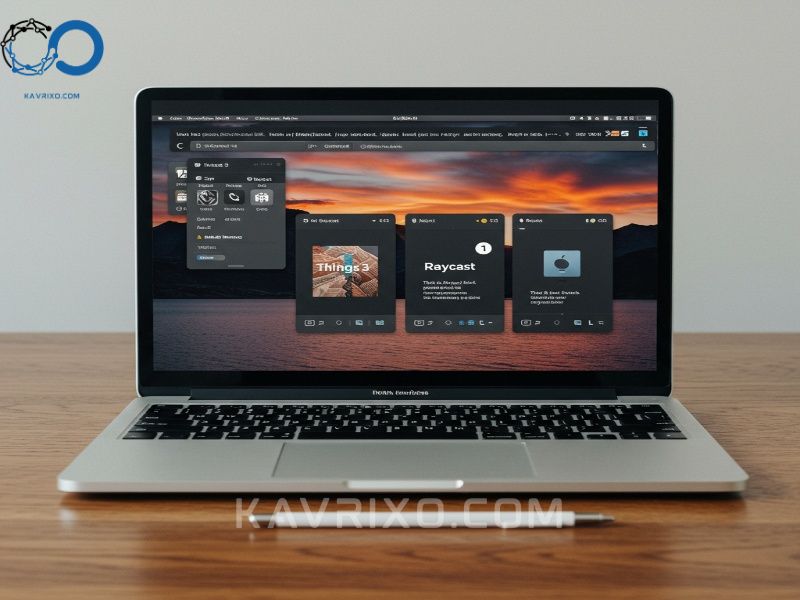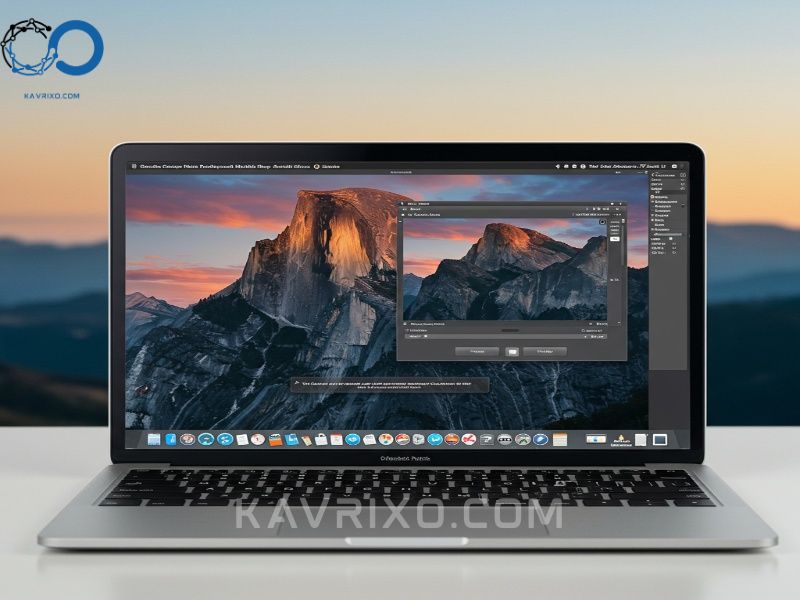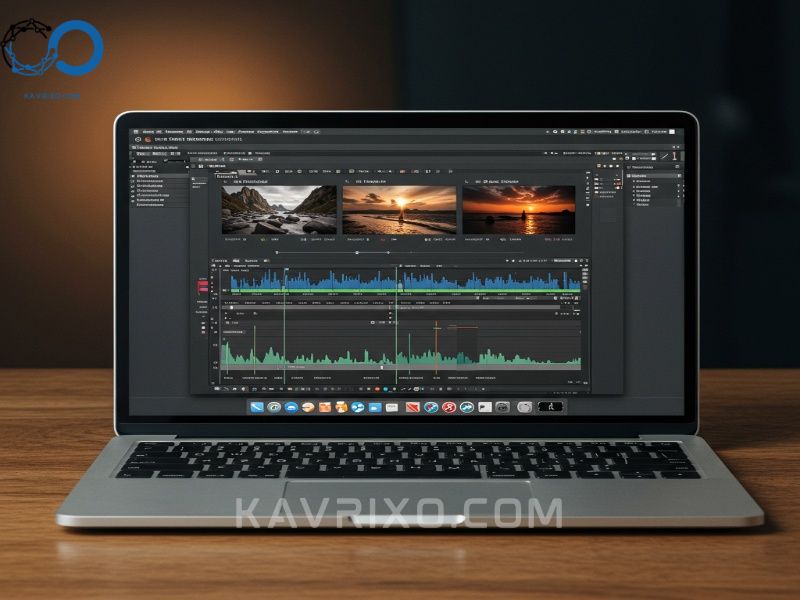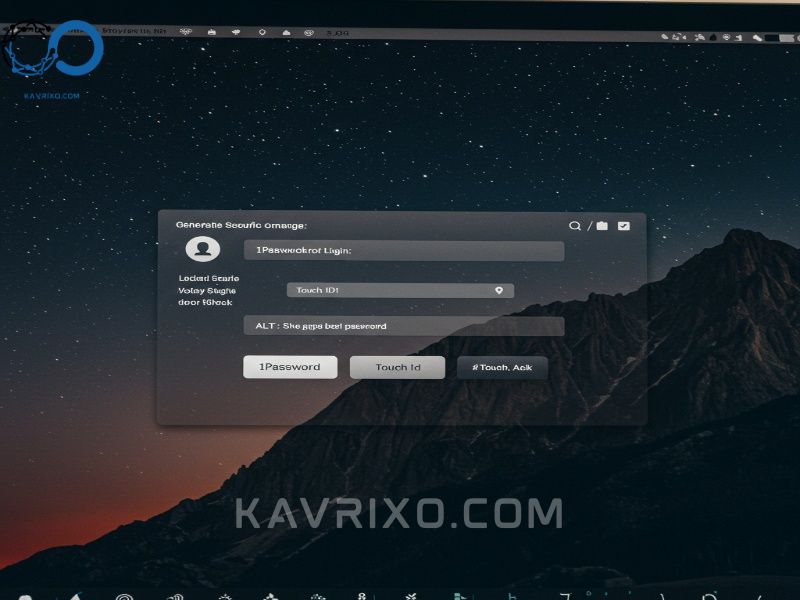Welcome, fellow Mac enthusiast! If you’ve just invested in a brand-new MacBook Pro or Air, or maybe you’re looking to supercharge an older model, you already know the potential power packed into that sleek aluminum chassis. But here’s the secret that separates a standard user experience from an exceptional one: the software you install.
macOS is fantastic right out of the box, sure, but the true magic of the Apple ecosystem lies in the thriving third-party development community. Over my years working primarily on MacBooks—from development projects to heavy media editing—I’ve meticulously tested hundreds of applications. I’ve wasted time on subpar tools so you don’t have to.
This isn’t just another list of generic recommendations. This is a deep dive, born from practical, daily use, identifying the best apps for MacBook users who demand efficiency, creativity, and stability. We’re going beyond the basics to find the best macbook software that genuinely transforms how you work, manage your files, and interact with your digital life. If you want to know the single best app for mac for any given task, you’ve come to the right place.
Let’s unlock the full potential of your machine together.
Contents
- 1 Maximizing Productivity: The Core Workflow Tools
- 2 Essential Utilities and System Enhancement
- 3 Creativity, Design, and Media Production
- 4 Security, Privacy, and Browsing Experience
- 5 Niche Power-User Tools: Going the Extra Mile
- 6 The Crucial Question: Free vs. Paid Best Apps MacBook
- 7 Final Thoughts on Curating Your MacBook Ecosystem
Maximizing Productivity: The Core Workflow Tools
When we talk about productivity, we’re not just talking about getting tasks done; we’re talking about eliminating friction. The core mission of the best apps macbook users rely on is to minimize the time spent managing inputs and maximize the time spent creating output.
Note-Taking and Knowledge Management
While Apple Notes is perfectly fine for quick scribbles, the modern professional needs a system that can handle structured knowledge, cross-platform syncing, and complex organization.
Notion (The All-in-One Workspace)
Notion isn’t just a note-taking app; it’s a dynamic database, a project tracker, a collaborative wiki, and a habit tracker all rolled into one. For professionals who manage multiple streams of information—meeting notes, content calendars, personal goals, and client documentation—Notion is unparalleled.
What makes it one of the best apps for macbook productivity? Its sheer customizability. You can build complex systems using databases, link pages seamlessly, and view data in different formats (Kanban boards, calendars, tables). I personally rely on Notion to manage my editorial pipeline; it’s the hub where ideas transform into finished articles.
Obsidian (The Local Powerhouse)
If privacy and local control are your top priorities, and you thrive on interconnected thinking, Obsidian is the superior choice. It utilizes plain text markdown files stored locally on your machine (or synced via iCloud/Dropbox), ensuring you own your data.
Obsidian’s standout feature is the Graph View, which visually maps the connections between your notes. This is ideal for researchers, writers, and students who need to see how disparate ideas link together. It’s an incredibly powerful best macbook software solution for building a “Second Brain.”
Task Management and Project Organization
We’ve all tried sticky notes, but a truly effective task manager needs to integrate seamlessly into macOS and offer clarity, not clutter.
Things 3 (Elegant Simplicity and macOS Integration)
If you value design and deep integration, Things 3 is arguably the best app for mac task management. It adheres strictly to the Getting Things Done (GTD) methodology while maintaining a clean, minimalist interface.
The integration with macOS features is flawless. You can quickly add tasks using a global shortcut, drag emails from Mail directly into the app, and see your schedule alongside your to-dos. It strikes the perfect balance between powerful features and ease of use, ensuring you spend less time organizing and more time doing.
Todoist (Cross-Platform Collaboration)
For those who work across Mac, Windows, and Android, or collaborate heavily with non-Mac users, Todoist is the gold standard. Its natural language input (“Buy milk tomorrow at 5 PM”) is incredibly fast, and its project organization capabilities are robust. It handles delegation and team views exceptionally well, making it a powerful choice for small business owners and distributed teams.

Keyboard Efficiency and Automation
The fastest way to do anything on your computer is without touching the mouse. Power users know that keyboard launchers are the key to unlocking true speed.
Raycast (The Modern Command Center)
For years, Alfred reigned supreme, but Raycast has quickly become the new king of keyboard launchers. Raycast acts as a universal search bar, calculator, snippet manager, window manager, and script runner—all accessed via a single keyboard shortcut (usually Cmd + Space).
Why switch? Raycast’s extensibility through community-driven “Extensions” is phenomenal. You can control Spotify, search Jira, convert currencies, and manage system settings without ever leaving the keyboard. This utility is indispensable and easily ranks among the top best macbook software tools for efficiency.
Alfred (The Customizable Veteran)
While Raycast is gaining ground, Alfred remains a robust and deeply customizable option, especially for users who rely heavily on complex workflows. If you need highly specific, custom-built scripts and commands, Alfred’s Powerpack is still a viable choice. The choice between Raycast and Alfred often comes down to personal preference, but both are light years ahead of the native Spotlight search.
Essential Utilities and System Enhancement
Native macOS features are good, but they sometimes lack the fine-tuned control or specialized functionality that truly elevates the user experience. These tools are the unseen workhorses that keep your MacBook running smoothly and efficiently.
Window Management
If you work with more than one application open at a time (which is everyone), you need dedicated window management. Dragging windows manually is a huge time drain.
Rectangle (The Free and Open-Source Champion)
Rectangle is based on the legacy of Spectacle and is the simple, powerful, and free solution for window snapping. Using customizable keyboard shortcuts, you can instantly snap windows to the left half, right half, quarters, or maximize them.
This application is mandatory for anyone running a large external monitor. It eliminates the tedious mouse work associated with creating split-screen views, making it one of the most critical utility best apps macbook users can download.
Magnet (The Paid Polish)
If you prefer a slightly more visual and polished experience, Magnet offers similar functionality with a focus on ease of use and a pristine UI, often preferred by those new to window snapping.

File Management and Quick Access
macOS Finder is functional, but managing storage, uninstalling applications completely, and accessing hidden files requires specialized tools.
CleanMyMac X (The Comprehensive System Janitor)
I hesitated to recommend system cleaners years ago, but CleanMyMac X has proven itself to be the exception. It’s far more than just a disk cleaner; it’s a suite of tools that manages uninstalls (crucial for removing residual files), monitors system health, optimizes RAM, and scans for malware.
If your MacBook is starting to feel sluggish, or if you need to quickly free up gigabytes of space by identifying large, unused files, CleanMyMac X is an investment that pays for itself in performance gains. It is the definitive best macbook software for maintenance.
Bartender (Taming the Menu Bar)
The macOS menu bar quickly becomes a cluttered mess of icons, especially once you start installing all these great utilities. Bartender solves this beautifully by hiding icons and organizing them into a secondary, customizable menu, keeping your desktop clean and focused. It’s a small detail, but essential for maintaining a professional, distraction-free environment.
Clipboard Managers
How often do you copy something, then realize you need the previous thing you copied? A clipboard manager is a foundational productivity tool that saves your copy history.
Paste (Visual and Synced)
Paste keeps a visual history of everything you copy—text, images, links, and code snippets. You can review your history, organize frequently used items into “pinboards,” and sync this history across your Apple devices via iCloud. Its visual interface makes retrieving items incredibly fast.
Maccy (Lightweight and Open Source)
If you prefer something minimal that lives purely in the menu bar and uses hotkeys, Maccy is a fantastic, lightweight, and unintrusive alternative. It focuses solely on historical text retrieval, prioritizing speed over visual flair.
Creativity, Design, and Media Production
Many users choose a MacBook specifically because of its power in handling creative workloads. While Apple provides excellent native apps like Photos and iMovie, professional and semi-pro users need greater control and depth. These are the best apps for macbook creative professionals.
Photo Editing and Design
The days of Photoshop holding a complete monopoly are over. Competition has driven innovation and affordability.
Pixelmator Pro (The Intelligent Editor)
Pixelmator Pro is a stunningly intuitive and powerful image editor that feels like a native macOS application (unlike some bloated legacy software). It leverages machine learning heavily, offering features like automatic subject selection, intelligent scaling, and superior upscaling tools.
For photographers and designers who need layer support, non-destructive editing, and professional color grading without the monthly subscription burden of Adobe, Pixelmator Pro is the undisputed champion.
Affinity Suite (The Professional Alternative)
Serif’s Affinity Suite (Designer, Photo, and Publisher) offers the industry-standard feature sets of Adobe’s core products at a fraction of the cost, sold via a single, perpetual license. If your work requires deep compatibility with professional design files (like PSD or AI formats) and you need a robust, studio-grade tool, the Affinity apps are essential best macbook software.
Video and Audio Production
The MacBook Pro line, in particular, excels at video rendering and music production thanks to Apple Silicon.
Final Cut Pro (Speed and Optimization)
If you are serious about video editing and work exclusively within the Apple ecosystem, Final Cut Pro (FCP) is the fastest, most optimized solution available. FCP is designed from the ground up to utilize the powerful GPU and unified memory of Apple Silicon, resulting in rendering speeds that often leave competing editors behind.
DaVinci Resolve (The Free Powerhouse)
For colorists, indie filmmakers, and those who need a professional tool without the initial investment, DaVinci Resolve’s free version is staggeringly powerful. Its color grading tools are industry-leading, and it handles complex timelines with ease. If you need the single best app for mac video editing that costs zero dollars, this is it.

Screen Recording and Annotating
Standard screenshots are fine, but annotating, blurring sensitive information, and recording high-quality GIFs require a specialized tool.
CleanShot X (The Ultimate Screenshot Utility)
CleanShot X revolutionizes how you capture and annotate your screen. It allows you to capture scrolling screenshots, record video or GIF files with customizable frames, and instantly annotate captures with arrows, text, and redactions.
For developers, educators, and anyone who needs to clearly communicate visual ideas, this utility is a massive time saver. It automatically uploads files to the cloud if desired, providing instant sharing links.
Security, Privacy, and Browsing Experience
In our connected world, security and privacy are non-negotiable. The best apps macbook owners use today are those that secure their digital footprint without interrupting their flow.
Password Management
Relying on built-in browser password managers or, worse, reusing passwords, is incredibly risky. A dedicated password manager is foundational to digital security.
1Password (The Industry Leader)
1Password remains the gold standard. It offers robust encryption, seamless integration with macOS (via Touch ID and Face ID on newer models), and excellent cross-platform support. It securely stores passwords, secure notes, credit cards, and two-factor authentication keys.
The convenience of 1Password’s browser extension, coupled with its reliable syncing, makes it the indispensable choice for securing your digital life.
Bitwarden (The Open-Source Secure Alternative)
For users seeking a powerful, open-source, and free alternative, Bitwarden provides enterprise-level security features and excellent cross-platform support. While its interface might not be as polished as 1Password, its security and core functionality are top-notch.

VPN Services and Ad Blockers
Protecting your connection and minimizing digital distractions are essential for productivity.
Proton VPN (Trustworthy and Transparent)
When choosing a VPN, trust is everything. Proton VPN, developed by the same team behind ProtonMail, offers robust security, a strict no-logs policy, and excellent speeds. It offers a free tier that is surprisingly generous, making it an accessible security choice.
AdGuard (System-Wide Content Blocking)
While Safari’s content blockers are decent, a powerful, system-wide solution like AdGuard ensures that not only browser ads but also ads and trackers within applications (where applicable) are blocked. This results in faster loading times and a significant boost to privacy.
Backup Solutions
Your MacBook is hardware; it will eventually fail or get lost. A reliable, automated backup solution is not optional—it’s mandatory.
Backblaze (Cloud Backup Simplicity)
While Time Machine handles local backups perfectly, you need an off-site, set-it-and-forget-it cloud solution. Backblaze offers unlimited cloud backup for a low monthly fee, running silently in the background. If your machine is stolen or destroyed, you can restore all your files easily. This is arguably the most crucial piece of best macbook software you can install for data integrity. We often overlook backups until it’s too late, so install this immediately.
Niche Power-User Tools: Going the Extra Mile
These are the tools that often separate the casual user from the professional who optimizes every single digital interaction. If you spend your days in a terminal or juggling virtual environments, these best apps macbook recommendations are for you.
Terminal and Developer Utilities
The native Terminal app is functional, but developers and system administrators require greater flexibility.
iTerm2 (The Terminal Reimagined)
iTerm2 is the essential replacement for the standard macOS Terminal. It adds crucial features like split panes, robust search capabilities, customizable themes, and powerful tab management. If you spend any significant amount of time interacting with the command line, iTerm2 is a non-negotiable upgrade.
Homebrew (The macOS Package Manager)
Homebrew is a simple, yet revolutionary, package manager for macOS. It allows you to easily install, update, and manage command-line tools and utilities (like Python, Node.js, or various developer libraries) that Apple doesn’t include by default. It standardizes the installation process and keeps your environment clean.

Virtualization
Sometimes, you just need to run Windows or Linux for specific applications or testing environments.
Parallels Desktop (Seamless Integration)
Parallels Desktop is the industry leader for running operating systems like Windows on macOS. Its “Coherence” mode allows Windows applications to run seamlessly on your macOS desktop as if they were native applications, sharing files and clipboard history effortlessly. For M-series Macs, Parallels has done phenomenal work optimizing for the ARM architecture.
The Crucial Question: Free vs. Paid Best Apps MacBook
As you review this list of the best apps for macbook, you’ll notice a mix of free (or freemium) and paid applications. Is it worth investing in software?
My philosophy is simple: If a piece of software saves you more than one hour of work per month, it is worth the cost.
- Free/Open Source (Great starting points): Rectangle, Maccy, DaVinci Resolve (free version), Bitwarden, Homebrew. These offer core functionality without cost.
- Paid/Subscription (The efficiency boosters): Things 3, CleanMyMac X, 1Password, CleanShot X, Raycast (Pro tier for advanced features). These tools offer superior integration, polish, and features that eliminate friction and boost speed.
When you invest in quality best macbook software, you are essentially investing in your time. The small, repetitive tasks that these applications automate—like finding a window layout, retrieving an old copy-paste, or manually removing residual files—add up exponentially over weeks and months. Don’t be afraid to try free trials, but recognize when a paid tool provides a genuinely superior experience that justifies the expense.
Final Thoughts on Curating Your MacBook Ecosystem
Choosing the best apps macbook users rely on is an ongoing process. Technology evolves, and so should your toolkit. The applications listed here represent the current gold standard—tools that are optimized for Apple Silicon, deeply integrated with macOS, and proven to enhance daily productivity and creativity.
My advice? Don’t try to install everything at once. Pick one or two pain points in your current workflow and download the recommended application to solve that specific problem. Start with a solid clipboard manager or a dedicated window snapper, and build your perfect software ecosystem incrementally.
By equipping your MacBook with these essential software tools, you’re not just installing apps; you’re building a personalized, high-performance command center tailored to your exact needs.
Go forth and optimize! I guarantee these tools will transform your relationship with your Mac.

